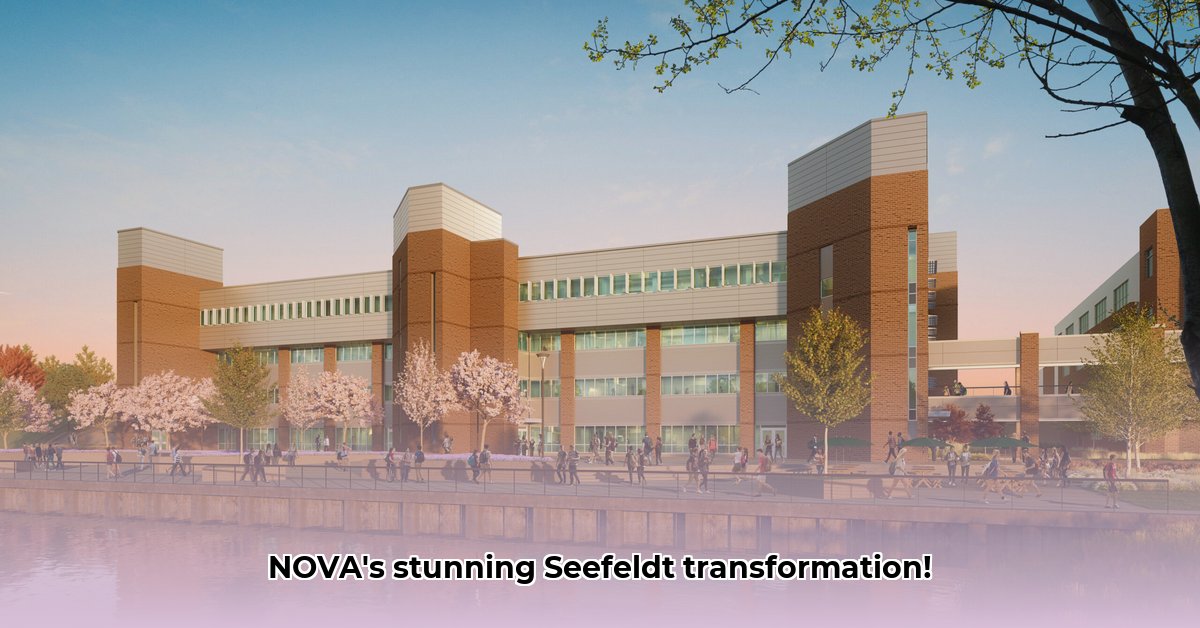
A Transformed Learning Environment: The Seefeldt Building Renovation at NOVA's Woodbridge Campus
The Seefeldt building at Northern Virginia Community College (NOVA)'s Woodbridge campus has undergone a significant transformation, evolving from an aging facility into a modern, vibrant learning hub. This case study examines the renovation project, highlighting its successes, challenges, and implications for future higher education facility modernization. The project serves as a compelling example of how strategic planning and investment can dramatically improve the student experience and create a more sustainable learning environment. This transformation is crucial in today’s competitive higher education landscape, where attracting and retaining students depends significantly on the quality of the learning environment.
Background: Addressing the Needs of a Growing Institution
Prior to the renovation, the Seefeldt building presented several significant challenges. Outdated infrastructure, including aging electrical systems, plumbing, and HVAC, hampered both functionality and energy efficiency. Learning spaces were cramped and lacked the flexibility to accommodate diverse teaching methodologies. Furthermore, the building lacked accessibility features, hindering inclusive participation for students with disabilities. The overall aesthetic was dated, creating an unwelcoming atmosphere. These shortcomings impacted student satisfaction, potentially affecting retention rates and overall academic success. The renovation aimed to directly address these issues, creating a modern, accessible, and inspiring learning environment.
Project Description: A Comprehensive Modernization
The Seefeldt renovation was far more than a superficial facelift. It encompassed a comprehensive modernization that touched every aspect of the building:
Infrastructure Upgrade: Complete replacement and upgrading of electrical, plumbing, and HVAC systems significantly improved the building's functionality, reliability, and energy efficiency. This upgrade not only enhanced comfort and safety but also contributed to long-term cost savings through reduced energy consumption.
Modernized Learning Spaces: Classrooms were redesigned for flexibility, incorporating interactive whiteboards, improved acoustics, and adaptable furniture to accommodate various teaching styles and group activities. The creation of collaborative learning spaces promoted student interaction and engagement. Improved lighting and ventilation fostered a more comfortable and productive learning environment.
Enhanced Accessibility: Extensive improvements ensured full ADA compliance, including the installation of ramps, wider hallways, and upgraded restrooms. This commitment to accessibility significantly broadened participation and fostered an inclusive campus culture.
Streamlined Admissions Area: A redesigned admissions area created a more welcoming and efficient space for prospective students, improving the overall enrollment experience and crafting a positive first impression of NOVA.
Results and Outcomes: A Measurable Impact
The renovation's positive impact is evident across multiple metrics. While comprehensive quantitative data from student satisfaction surveys are still being collected and analyzed, qualitative feedback consistently points to a significant improvement in student experience. The modernized learning spaces have fostered a more collaborative and engaging atmosphere. Anecdotal evidence suggests a potential increase in student satisfaction and a more positive perception of the overall learning environment. The enhanced accessibility features have expanded opportunities for all students. Furthermore, the improved energy efficiency of the upgraded infrastructure is anticipated to deliver substantial cost savings in the long term. Future data analysis will provide a deeper understanding of the impact on student academic performance and retention.
Challenges and Lessons Learned: Overcoming Obstacles
The project encountered predictable challenges, including budget constraints and unforeseen construction issues. Careful financial planning and robust contingency planning proved crucial in navigating these obstacles. Effective communication and collaboration among the project team, NOVA administration, faculty, and students were essential in resolving unexpected challenges and ensuring the project remained on track. Open and transparent communication also assisted in managing expectations and maintaining a positive project environment. These challenges underscored the importance of proactive risk management and adaptive project management techniques.
Future Implications & Recommendations: Sustaining the Investment
To ensure the long-term success of the Seefeldt building renovation, NOVA has implemented a multi-faceted strategy:
Proactive Maintenance: A detailed maintenance plan, incorporating regular inspections and preventative maintenance, is crucial to preserving the building's upgraded systems and aesthetic.
Technological Integration: Continuous evaluation and adaptation of technology within the learning spaces will ensure that the building remains at the forefront of educational innovation.
Ongoing Assessment: Regular assessment of student satisfaction, facility functionality, and technology needs will inform future improvements and enhancements.
Community Engagement: Continuing to engage the local community through partnerships and showcasing the building's success will ensure lasting community investment in NOVA.
Conclusion: A Model for Higher Education Facility Modernization
The Seefeldt building renovation stands as a successful case study demonstrating the transformative potential of strategic investment in higher education facilities. By addressing infrastructural challenges, enhancing learning spaces, and prioritizing accessibility, NOVA has created a significantly improved learning environment. The project's success underscores the importance of comprehensive planning, collaborative teamwork, and proactive maintenance strategies in ensuring the long-term value of such investments. The lessons learned from this project provide valuable insights for other institutions seeking to modernize their facilities and enhance the educational experience for their students. This renovation is a significant step towards creating a sustainable and thriving learning community at NOVA’s Woodbridge campus.